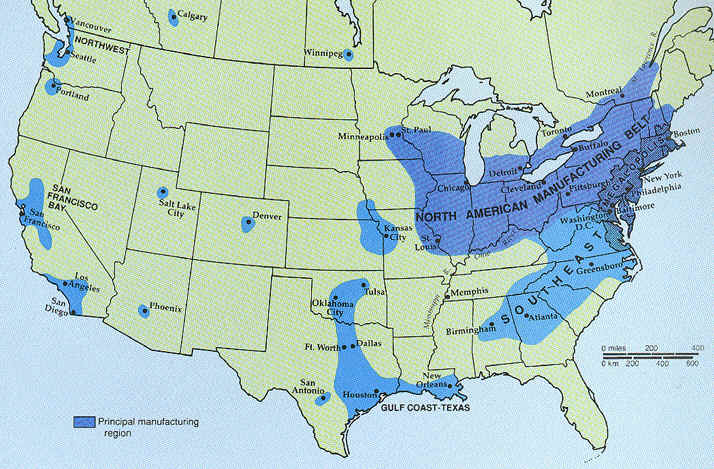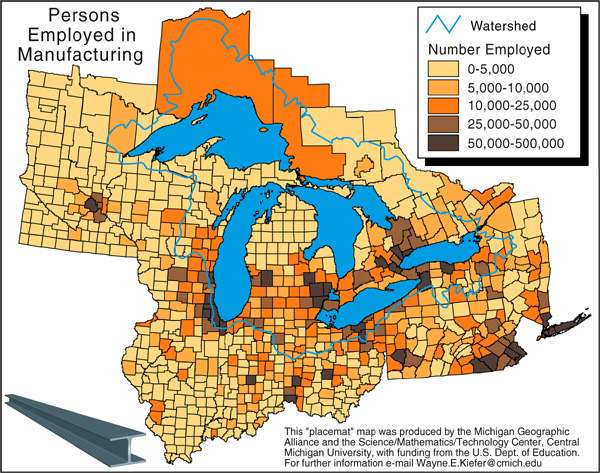MANUFACTURING
Pine lumber from Michigan, Wisconsin, and Minnesota made possible the building of farmhomes and barns, and Chicago was re-built after the great fire of 1871 with Michigan and Wisconsin pine. But the passing of the lumberman left to Michigan itself a legacy of problems. Homesteaders and those who obtained land from the railroads or the state tried, but in most cases failed, to make a living on the sandy soil in the cut-over. Railroads, which had built lines into northern lower Michigan with the inducement of land grants, were left with little traffic. The end of large-scale lumbering in the Upper Peninsula, coupled with the decline, first of copper and then of iron production, brought severe economic problems to that area. The relatively poor soils and the short growing season repelled farmers; the distance from major markets did not make the region inviting to manufacturing industries.

Source: Unknown

This material has been compiled for educational use only, and may not be reproduced without permission. One copy may be printed for personal use. Please contact Randall Schaetzl (soils@msu.edu) for more information or permissions.